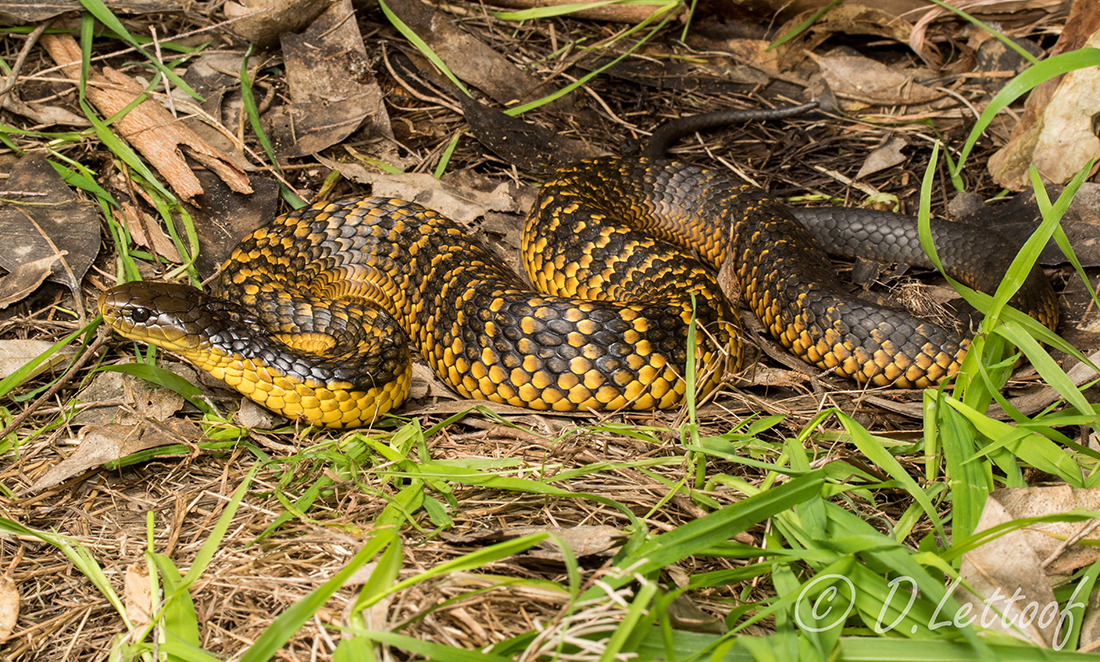Australia is notorious for being home to some of the world’s deadliest animals. Drop bears, danger noodles, crocs, sharks, deceivingly beautiful stingers and even spiders that rain from the sky – we have it all.
And now, according to new research from Curtin University, the western tiger snake, which is venomous, has started to inbreed in some areas of Perth.

While they haven’t started growing an extra head (yet), if you suffer from ophidiophobia, you may want to skip this story. (And you really don’t want to visit Carnac Island, off the coast of Freo.)
The great divide
Like many capital cities, Perth has a problem with urban sprawl. It increases the urban heat island effect and makes us more reliant on cars.
It also has a big impact on the ecosystem. Last year, Curtin University PhD candidate Damian Lettoof found tiger snake populations within Perth’s wetlands to be accumulating high levels of toxic heavy metals due to pollution.
To make matters worse, it turns out the age-old question that has divided the humans of Perth for decades – north or south of the river? – is taking its toll on tiger snakes as well.
“There’s large rivers that cut through the city, which has separated the tiger snake population into north and south,” says Damian.
And unlike Perth’s human population, tiger snakes cannot easily travel across the river to visit other ‘urban islands’. As a result, those living in smaller wetlands are more likely to inbreed.
Isolation limits mate choice
Before urbanisation, western tiger snakes are thought to have moved freely throughout the Swan Coastal Plain using seasonal wetlands.
But thanks to widespread development, they’re now restricted to a handful of isolated lakes and river edges.
Damian and his team sampled ventral (belly) scale clips from 150 western tiger snakes from six wetlands across the southern and northern suburbs.
They found that tiger snake populations at Loch McNess (also known as Yanchep Lake), Lake Joondalup and Herdsman Lake had much lower genetic diversity than those at Bibra Lake, Kogolup Lake in Beeliar and Black Swan Lake.
For the sake of comparison, they also tested nine tiger snakes living on Carnac Island, where the species is thought to have been introduced around 90 years ago.
Gene pool size matters
Genetic diversity often indicates the capacity of a species to adapt to changes in its environment.
“If you’ve got a population with a huge amount of diversity, you might have some individuals that can tolerate really cold weather, some individuals that can tolerate really hot weather or more parasites,” says Damian.
“So if one of those stressors increases and it knocks out half the population that aren’t suitable for it, you’ve still got the other half that have the capacity to exist. And they can start breeding their genes into the population so they can adapt and survive.”
So what does this mean for tiger snakes at Herdsman Lake and Carnac Island, which showed the highest ‘signal’ of inbreeding?

S-s-survival of the fittest
While inbreeding increases the risk of genetic disorders, Damian says it’s not causing physical deformities at this stage.
“It could be having an impact on some molecular level or something that we can’t easily measure physically,” says Damian.
That’s because, while Perth’s wetlands are isolated, they support enough tiger snakes to maintain genetic variation.
“The inbreeding genes are not really taking over, and there’s only a handful of individuals with them,” says Damian.
A sign of ecosystem health
Although western tiger snakes are not yet inbreeding to a significant level, it does not mean the species are completely safe.
Western tiger snakes have relatively long lives, with most living up to 10 years. As a result, changes in their population and its impact will take some years to become noticeable.
Still, if Perth continues to become a sprawling concrete jungle, Damian and his team predict that inbreeding among western tiger snakes will become more common.
“The best thing is connectivity,” says Damian.
“For wetlands that are already isolated, the best thing we can do is maintain or restore remnant vegetation and try to uphold the best habitat quality we can.”
“For new areas that are being developed that have wetlands, connectivity needs to be incorporated into the plan from the beginning.”
“We need more complex vegetation and habitats that can support snakes and other species.”
Western tiger snakes are a top predator after all.
“Their presence in a wetland indicates that there’s enough food and required habitat for them.”
So in the future, if researchers like Damian start to notice something going really wrong with the western tiger snake, it’s likely that the surrounding ecosystem is being affected as a whole.
And that’s a problem we definitely want to avoid.









